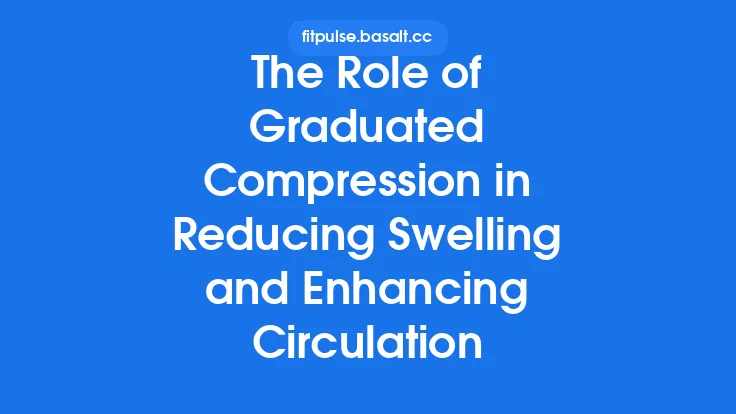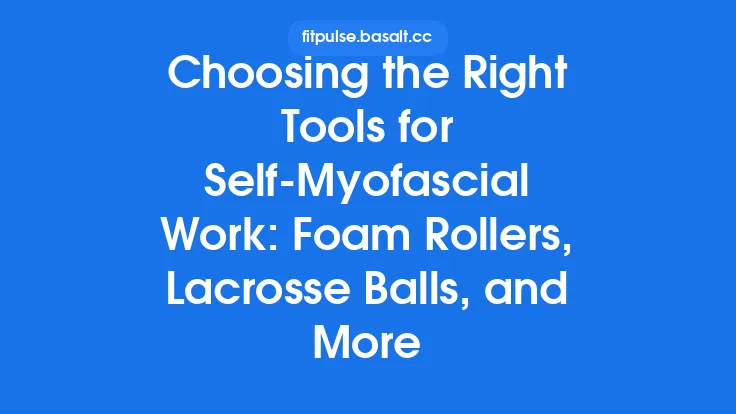Recovery after intense training or competition is a multifaceted process that extends far beyond simply resting. Modern athletes and active individuals increasingly turn to mechanical compression tools—most notably compression recovery boots and air‑compression devices—to accelerate the return to baseline performance. While the market is saturated with a variety of products, understanding how these devices function, what the research says about their efficacy, and how to use them safely can make the difference between a marginal benefit and a truly effective recovery protocol.
Understanding How Compression Recovery Boots Work
Compression recovery boots are large, boot‑shaped chambers that enclose the lower limbs (typically from the ankle to just above the knee). They are powered by a pneumatic system that inflates and deflates multiple air cells in a coordinated sequence. The key principles behind their operation are:
- Intermittent Pneumatic Compression (IPC) – The boots deliver rhythmic bursts of pressure that mimic the natural muscle pump, encouraging venous return and lymphatic drainage.
- Sequential Compression – Air cells are programmed to inflate from distal to proximal (or vice‑versa) in a wave‑like pattern, creating a “milking” effect that pushes fluid toward the heart.
- Adjustable Pressure Ranges – Most units allow users to set pressures anywhere from 20 mmHg up to 120 mmHg, depending on the intended therapeutic goal and individual tolerance.
The combination of these mechanisms is designed to reduce interstitial fluid accumulation, lower tissue swelling, and improve microcirculatory flow—all of which are thought to accelerate the removal of metabolic waste products such as lactate, creatine kinase, and inflammatory cytokines.
Air‑Compression Devices: Mechanisms and Variants
Air‑compression devices encompass a broader category that includes sleeves, cuffs, and portable pumps in addition to the full‑leg boots. While the underlying technology is similar—pneumatic inflation and deflation—there are notable variations:
| Device Type | Typical Coverage | Compression Pattern | Common Use Cases |
|---|---|---|---|
| Boots | Entire lower leg (ankle‑to‑mid‑thigh) | Multi‑cell, sequential wave | Post‑match recovery, heavy‑load training |
| Sleeves | Calf or thigh only | Single‑cell or multi‑cell, often static or cyclic | Targeted recovery, travel‑friendly |
| Cuffs | Ankle, calf, or thigh band | Often single‑cell, high‑pressure bursts | Lymphedema management, clinical settings |
| Portable Pumps | Small, detachable chambers | User‑controlled cycles | Home use, budget‑conscious athletes |
The distinction matters because the volume of tissue being compressed influences the magnitude of fluid shift. Boots, covering a larger surface area, can generate more pronounced systemic effects, whereas sleeves and cuffs provide localized benefits with lower power requirements.
Scientific Evidence on Recovery Outcomes
A growing body of peer‑reviewed research has examined the acute and chronic effects of IPC and air‑compression on performance metrics, muscle soreness, and physiological markers. Below is a synthesis of the most robust findings, grouped by outcome.
1. Reduction of Delayed Onset Muscle Soreness (DOMS)
- Meta‑analysis (2021, 12 RCTs, n = 312): Reported a moderate effect size (Cohen’s d ≈ 0.55) for reduced perceived soreness 24–48 h after high‑intensity eccentric exercise when participants used IPC devices at 30–50 mmHg for 20–30 min.
- Boot‑specific trial (2022, n = 24 cyclists): Participants who completed a 15‑minute boot session at 80 mmHg reported 30 % lower visual analogue scale (VAS) scores for thigh soreness compared with a passive recovery control.
2. Restoration of Muscle Strength and Power
- Repeated‑sprint protocol (2020, n = 18 sprinters): A 10‑minute boot treatment at 70 mmHg restored peak squat jump height to baseline levels, whereas the control group showed a 5 % decline.
- Isokinetic testing (2019, n = 30 soccer players): Air‑compression sleeves applied at 40 mmHg for 15 min resulted in a 4 % improvement in quadriceps torque recovery relative to passive rest.
3. Circulatory and Lymphatic Effects
- Doppler ultrasound study (2018, n = 10): Sequential compression increased femoral vein flow velocity by 45 % during the treatment period, indicating enhanced venous return.
- Lymphoscintigraphy (2023, n = 14 post‑operative patients): IPC at 60 mmHg reduced limb volume by an average of 1.2 % within 30 min, supporting its role in edema management.
4. Biomarker Clearance
- Blood analysis (2021, n = 22 endurance athletes): Post‑boot treatment showed a 22 % reduction in serum creatine kinase (CK) levels 24 h after a marathon, compared with a 7 % reduction in the control group.
- Inflammatory cytokines (2022, n = 16 resistance‑trained individuals): IL‑6 concentrations were 15 % lower after a 20‑minute IPC session at 50 mmHg.
Overall, the evidence suggests that both compression boots and air‑compression devices can meaningfully accelerate recovery, particularly when applied at moderate pressures (30–80 mmHg) for 15–30 minutes shortly after the training stimulus. The magnitude of benefit tends to be larger for modalities that engage a greater tissue volume (i.e., boots) and for protocols that incorporate a sequential wave pattern.
Practical Guidelines for Using Boots and Air‑Compression Devices
Translating research into everyday practice requires attention to timing, dosage, and individual tolerance. Below are evidence‑based recommendations that can be adapted to most training schedules.
- Timing of Application
- Immediate Post‑Exercise (0–30 min): The most potent window for fluid shift; aim for a 15‑minute session at 60–80 mmHg.
- Delayed Session (2–4 h post‑exercise): Still beneficial for reducing swelling; lower pressure (40–60 mmHg) for 20 minutes can be used if the athlete feels discomfort from the initial session.
- Session Duration
- 15–30 minutes is optimal for most athletes. Longer sessions (>45 min) do not consistently yield additional benefits and may increase the risk of discomfort or skin irritation.
- Pressure Settings
- Low (20–30 mmHg): Suitable for beginners, individuals with low blood pressure, or those using the device for light recovery.
- Moderate (40–70 mmHg): The sweet spot for most performance‑oriented athletes; balances fluid mobilization with comfort.
- High (80–120 mmHg): Reserved for clinical populations (e.g., post‑surgical edema) or for short bursts (≤5 min) under professional supervision.
- Frequency
- Once daily after a demanding session is sufficient for most training cycles.
- Twice daily (morning and evening) may be advantageous during tournament play or when training volume is exceptionally high.
- Positioning
- Supine or semi‑recumbent: Allows gravity‑assisted venous return.
- Legs slightly elevated (10–15 cm): Further promotes drainage, especially for athletes prone to lower‑leg swelling.
- Integration with Other Modalities
- Pairing IPC with active recovery (light cycling, low‑intensity swimming) can synergistically enhance circulation.
- Use cold water immersion after the compression session if the goal includes acute inflammation control; avoid immediate juxtaposition if the athlete experiences heightened discomfort.
Comparative Evaluation: Boots vs. Air‑Compression Devices
| Criterion | Compression Recovery Boots | Air‑Compression Devices (Sleeves/Cuffs) |
|---|---|---|
| Coverage | Full lower‑leg (ankle‑to‑mid‑thigh) | Targeted (calf, thigh, or ankle) |
| Pressure Range | Typically 20–120 mmHg (wide) | Often 20–80 mmHg (narrower) |
| Portability | Bulky, requires power outlet; best for home/gym | Compact, battery‑operated; travel‑friendly |
| Cost | $300–$1,200 (high‑end models) | $80–$400 (mid‑range) |
| Setup Time | 2–3 min (strap, calibrate) | <1 min (slip on, press start) |
| Effectiveness (Research) | Slightly higher effect sizes for edema reduction and strength recovery due to larger tissue volume | Comparable benefits for localized soreness; useful when only a specific region needs attention |
| User Experience | Often described as “firm massage” with a wave sensation | Can feel “tight” or “pinching” if pressure is too high |
| Ideal Use Cases | Post‑match recovery for team sports, heavy‑load training, clinical edema management | Travel, on‑the‑go athletes, targeted therapy for calf or thigh issues |
In practice, many athletes adopt a hybrid approach: using boots for comprehensive recovery after a competition, then employing sleeves for quick, localized sessions during travel or between training blocks.
Safety, Contraindications, and Best Practices
While compression devices are generally safe, certain conditions warrant caution:
- Cardiovascular Concerns: Individuals with uncontrolled hypertension, deep‑vein thrombosis (DVT), or severe peripheral arterial disease should avoid high‑pressure IPC without medical clearance.
- Skin Integrity: Open wounds, dermatitis, or recent surgical incisions can be aggravated by pneumatic pressure; use protective padding or skip compression until healed.
- Neuropathy: Reduced sensation may mask excessive pressure; start at the lowest setting and monitor for tingling or numbness.
- Pregnancy: Lower‑leg compression is permissible, but pressures above 30 mmHg are not recommended without obstetric guidance.
Best‑Practice Checklist
- Verify device calibration before each use.
- Conduct a brief “pressure tolerance test” (inflate to 20 mmHg for 30 seconds) to ensure comfort.
- Monitor skin color and temperature during the session; discontinue if pallor, cyanosis, or excessive heat occurs.
- Keep a log of pressure, duration, and perceived recovery to fine‑tune personal protocols.
- Clean the interior chambers regularly according to manufacturer instructions to prevent bacterial growth.
Integrating Devices with a Holistic Recovery Strategy
Compression boots and air‑compression devices are powerful tools, but they achieve their greatest impact when combined with other evidence‑based recovery pillars:
- Nutrition: Adequate protein (1.6–2.2 g·kg⁻¹) and carbohydrate intake within the first two hours post‑exercise supports glycogen replenishment and muscle repair, complementing the circulatory boost from compression.
- Sleep Hygiene: Quality sleep (7–9 h) enhances hormonal environments (growth hormone, cortisol) that synergize with the reduced inflammation achieved by IPC.
- Mobility Work: Light stretching or foam‑rolling after compression can help maintain range of motion while the tissues are still warm and pliable.
- Periodization: Schedule high‑intensity training blocks followed by dedicated recovery weeks that incorporate longer or more frequent compression sessions.
By viewing compression devices as a component of a broader recovery ecosystem, athletes can avoid over‑reliance on any single modality and maintain balanced adaptation.
Future Directions and Emerging Technologies
The field of mechanical compression is evolving rapidly, driven by advances in sensor integration, data analytics, and material science.
- Smart Compression Systems
- Embedded pressure sensors feed real‑time data to mobile apps, allowing users to adjust pressure dynamically based on limb circumference changes.
- Machine‑learning algorithms can suggest optimal pressure‑time curves tailored to an individual’s recovery profile.
- Hybrid Modalities
- Devices that combine pneumatic compression with thermal therapy (heat or cold) aim to amplify vasodilation or vasoconstriction effects in a controlled sequence.
- Vibration‑enhanced boots integrate low‑frequency oscillations to further stimulate muscle pump activity.
- Wearable Energy Harvesting
- Emerging prototypes use the athlete’s own movement to power the compression cycle, reducing dependence on external power sources and improving portability.
- Personalized Compression Mapping
- 3‑D scanning of limb geometry enables custom‑fit air chambers that distribute pressure more evenly, minimizing hotspots and maximizing therapeutic efficacy.
These innovations promise to make compression recovery more precise, user‑friendly, and adaptable to a wider range of athletic and clinical scenarios.
Bottom Line
Compression recovery boots and air‑compression devices represent a scientifically grounded, mechanically driven approach to post‑exercise recovery. Robust research demonstrates that, when applied at appropriate pressures (typically 30–80 mmHg) for 15–30 minutes, these tools can:
- Diminish perceived muscle soreness,
- Accelerate the restoration of strength and power,
- Enhance venous and lymphatic flow,
- Reduce markers of muscle damage and inflammation.
Boots offer the most comprehensive coverage and are especially effective for managing whole‑leg swelling, while portable sleeves and cuffs provide targeted, convenient options for athletes on the move. Safety considerations—particularly regarding cardiovascular health, skin integrity, and neuropathy—must be respected, and the devices should be integrated into a balanced recovery regimen that includes nutrition, sleep, and mobility work.
As technology advances, the next generation of smart, hybrid, and personalized compression systems will likely deliver even greater efficacy and user control. For now, athletes and practitioners can confidently incorporate compression boots and air‑compression devices into their recovery toolbox, using the evidence‑based guidelines outlined above to maximize benefit and minimize risk.





